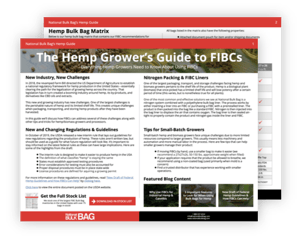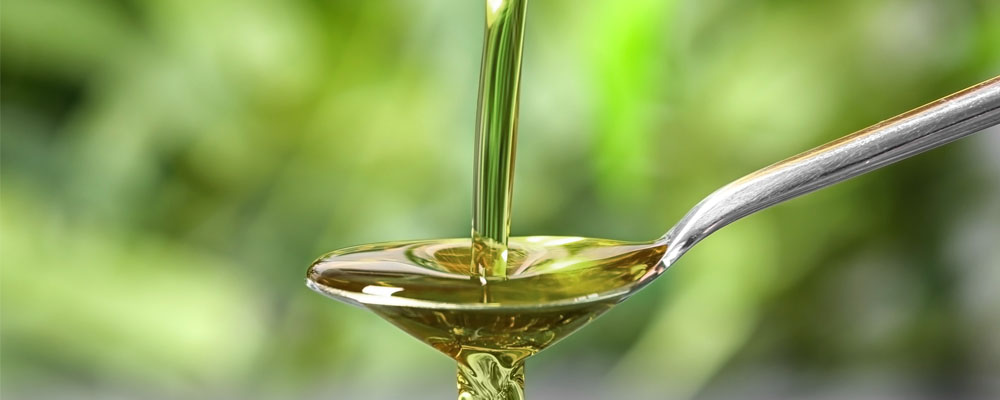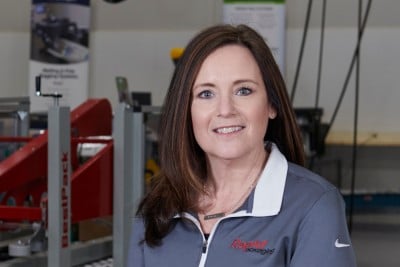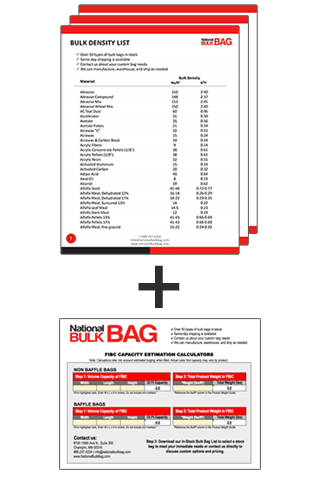In 2018, the revamped Farm Bill directed the US Department of Agriculture to establish a national regulatory framework for hemp production in the United States – essentially clearing the path for the legalization of growing hemp across the country. The USDA took that direction and established an interim final rule that outlines provision for the USDA to approve plans submitted by the states for domestic production.
This draft of an interim rule governs the production of hemp under the 2018 Farm bill and is not final but will form the basis for new regulations moving forward. If you’re in this industry or serve this industry, it’s important to keep informed. What are the details of these guidelines? How can FIBCs help hemp farmers? Let’s explore.
Highlights from the New Federal Guidelines
In order to help the hemp growers that we serve we’ve compiled some of the highlights of the new IFR (interim final rule) and how it may impact the industry.
- These rules are designed to make it easier to produce hemp in the United States
- Simply put, these are new guidelines that are designed to make it easier to grow hemp in the US regardless of what state you reside.
- The definition of hemp is staying the same.
- Any cannabis with a delta-9 tetrahydrocannabinol (THC) concentration below 0.3%. Any cannabis with a THC level exceeding 0.3% will be considered marijuana, a schedule I controlled substance that is regulated by the DEA (Drug Enforcement Agency).
- States must establish testing procedures
- In order to be approved for growing, States must incorporate procedures for sampling and testing hemp to ensure cannabis grown and harvested does not exceed acceptable level of THC (0.3%).
- These testing procedures must be completed by a DEA-registered laboratory
- Error considerations for testing (what “0.3% THC” means)
- Even though the definition of what classifies cannabis as hemp and/or marijuana is staying the same, there is a new definition that includes the consideration of testing error.
- For example, if a laboratory tests a sample and determines the THC concentration to be 0.35% with an error of +/- 0.06% this would still be considered hemp because 0.3% (the definition) is within the range (0.29% - 0.41%) when factoring in error.
- Disposal Procedures
- Any cannabis plants that exceed federal guidelines to be considered hemp need to be properly disposed of.
- License Procedures
- This IFR draft also lays out new procedures for acquiring a license to grow hemp.
These are just a few of the many new guidelines included in the new draft. We felt it important to highlight these as they impact our hemp clients the most.
To see the full draft, click here.
How FIBCs Can Help Farmers
FIBCs are fantastic for the storage and transportation of all the various products and bi products involved in the production of hemp. This ranges from the flower, clippings, plant stalks, etc. However, in light of the new guidelines requiring proper disposal of plants that do not meet federal guidelines, bulk bags could be extremely useful as large disposal vessels. Bulk Bags are commonly used as oversized disposal bags in a variety of industries particularly construction.
Everything You Need to Know about Using FIBCs with Hemp.
 The booming hemp industry is creating unique challenges for growers and processors alike. With the lack of reliable education on the internet, the hemp industry is commonly asking questions like how do I properly store my hemp and biomass? How can I extend my product’s shelf-life? How can I reduce the risk of mold and contamination? Is there an easier way to empty my bulk bags?
The booming hemp industry is creating unique challenges for growers and processors alike. With the lack of reliable education on the internet, the hemp industry is commonly asking questions like how do I properly store my hemp and biomass? How can I extend my product’s shelf-life? How can I reduce the risk of mold and contamination? Is there an easier way to empty my bulk bags?
In our new Hemp Grower's Guide to FIBCS, we discuss how FIBCs can help address the various challenges hemp growers face.







